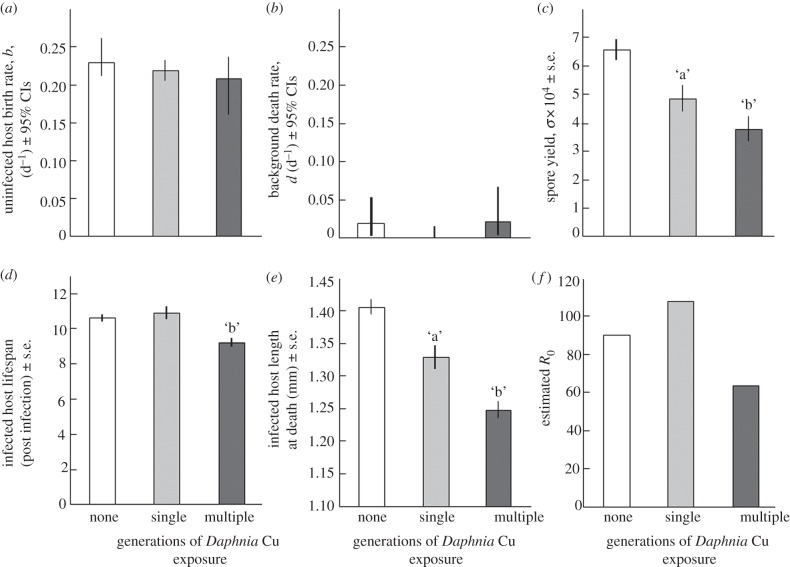Figure 2.
Parameter estimates derived for three contamination scenarios. Naive lineages of Daphnia were not exposed (‘none’, white bars) or were exposed (‘single’, grey bars) to copper during the life table experiment; meanwhile, Daphnia from exposed lineages also received copper during the experiment (‘multiple’, dark grey). (a) Cu treatments did not affect the birth rate or (b) death rate of uninfected Daphnia. (c–e) However, contamination significantly affected three traits of infected hosts (letters ‘a’ and ‘b’ denote significant differences between no exposure–single generation and single-generation–multi-generational exposure comparisons): (c) spore yield, (d) lifespan and (e) length at death. (f) Compared with the no contamination scenario, single-generation contamination increased the parasite's R0, whereas multi-generational contamination decreased it. R0 calculated with transmission rate (β) from figure 1a; also c = 0.01 and m = 0.75.

